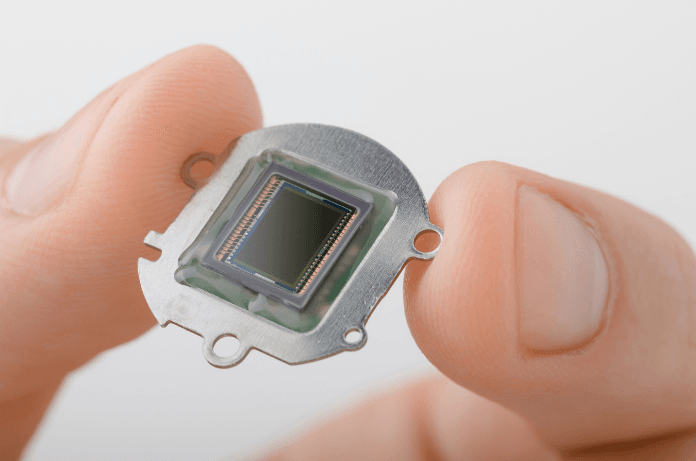Imagine having the power to detect spoiled food, identify fake medicines, or even diagnose illnesses—all with a simple smartphone or wearable device. Researchers at Aalto University in Finland have turned this vision into reality. These researchers developed a groundbreaking device: a tiny spectral sensor that can analyze materials with supreme accuracy.
This remarkable device brings high-end technology directly to the hand. The big breakthrough combines tunable optoelectronic interfaces with cutting-edge algorithms. It unlocks the new possibilities for applications in integrated photonics and beyond.
Let’s explore how this innovation works and why it’s such a game-changer.
What is Spectral Sensing?
Spectral sensing is an advanced technology that identifies materials by studying how they interact with light. When light hits a material, it behaves uniquely—absorbing, reflecting, or emitting light differently depending on its composition. These light patterns, invisible to the human eye, can reveal important information about a material’s structure and properties.
Spectral sensing equipment was costly and oversized. Large, bulky systems like prisms and gratings were required to break light into sensing components. So, these sensors remained confined to industrial and laboratory environments only. However, this Finnish research team has flipped the script and developed a sensor so tiny and affordable. Now, it can fit into regular and hand-carrying devices.
How Does This Tiny Spectral Sensor Work?
The new spectrum sensor measures just 5 micrometers by 5 micrometers. It is 200 times smaller than the cross-section of a human hair. Despite its size, it packs powerful technology. Instead of relying on traditional bulky optical components, this sensor uses its electrical responses to light to achieve incredible accuracy.
When exposed to light during its training phase, the tiny chip “learned” to create unique electrical fingerprints for different materials. These fingerprints are decoded using advanced algorithms, allowing the sensor to identify substances with astonishing precision.
To put this in perspective, the sensor can identify light wavelengths with a peak accuracy of 0.2 nanometers, far exceeding the capabilities of typical portable devices.
-
Revolutionizing Healthcare
This technology can help make healthcare more accessible, especially in remote areas where lab equipment is unavailable.
-
Transforming Food Safety
With this sensor integrated into a phone or wearable, one could instantly detect spoiled food, ensuring better safety for you and your family.
-
Improving Autonomous Driving
Autonomous vehicles rely heavily on sensors to make decisions. This miniaturized spectrum sensor could help cars identify road conditions, detect hazards, and improve navigation accuracy, making self-driving cars safer and more reliable.
-
Reducing Costs and Increasing Accessibility
Traditional spectral sensing systems are expensive and limited to industries and laboratories. This tiny sensor is affordable, compact, and adaptable, making high-tech spectroscopy available to everyday users.
The potential applications are vast. Fedor Nigmatulin, a PhD researcher and co-author, notes, “We have made great progress toward tiny, portable spectrometers that could revolutionize consumer electronics in the future.” Combining this incredibly small hardware with smart algorithms creates a device that is not only powerful but also cost-efficient and adaptable to a wide range of uses.
The Science Behind the Spectral Sensor
The secret of the tiny spectral sensor lies in its meticulously designed optoelectronic interface, which allows for precise control of electrical flow by tweaking the voltage. This tunability enables the sensor to produce multidimensional photoresponses, meaning it can interact with light in ways never before possible.
According to Professor Zhipei Sun, a principal researcher at Aalto University, the sensor is like an artist trained to distinguish hundreds of subtle colors. “Our device is trained to identify difficult light patterns that are invisible to the naked eye,” he explains, highlighting its accuracy and versatility.
The Future is Bright
Xiaoqi Cui, the principal author of the study, highlights the simplicity of this new spectral sensing technique: “It simplifies challenges in material identification and composition analysis.” His work marks a significant step forward in the field of integrated photonics, paving the way for compact spectrometers that could transform consumer electronics.
This invention is a perfect example of how miniaturization and innovation can reshape industries. By shrinking complex lab technology into a device smaller than a grain of sand, the team at Aalto University has opened the door to exciting possibilities.
From empowering smartphones to act as food safety inspectors to enabling wearables that track your health in real time, this tiny spectrum sensor could become an essential part of everyday life.
As the researchers continue to refine and adapt the technology, one thing is clear: the future of spectral sensing is small, powerful, and full of potential.

